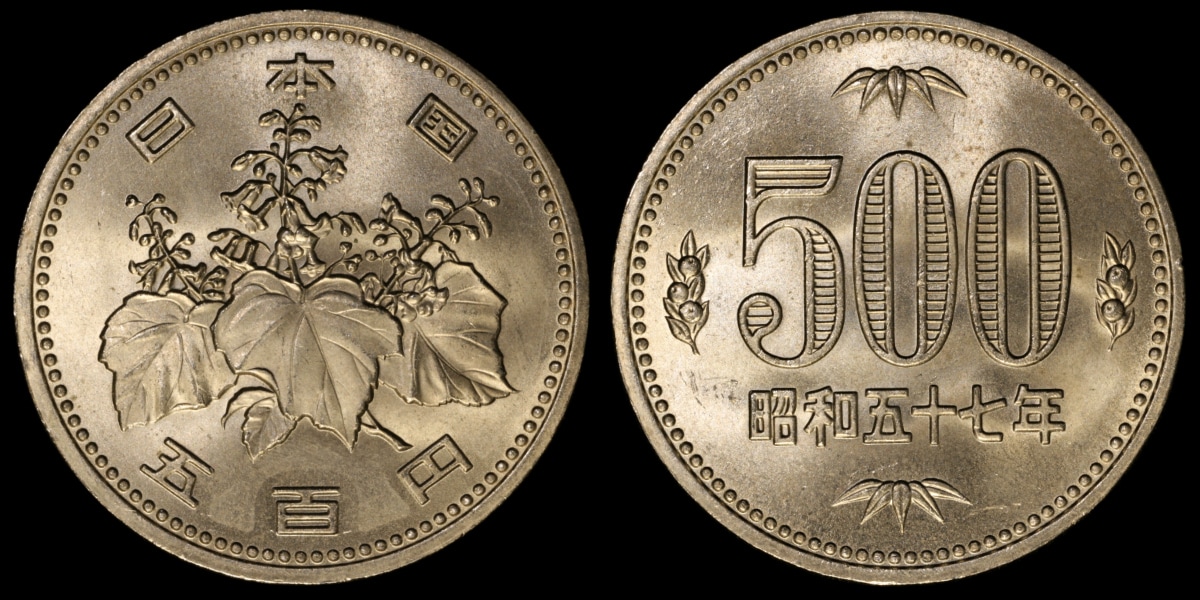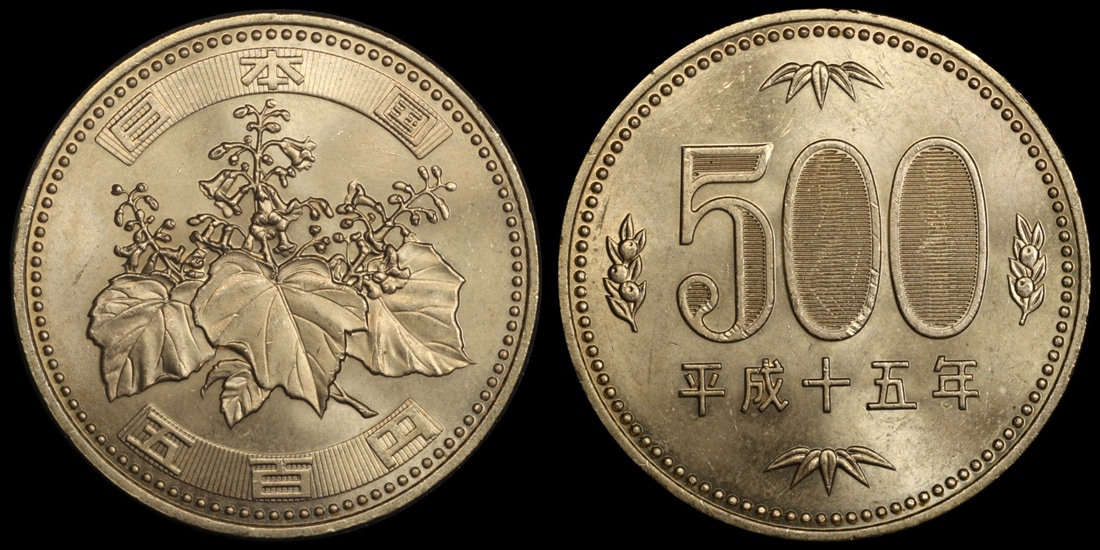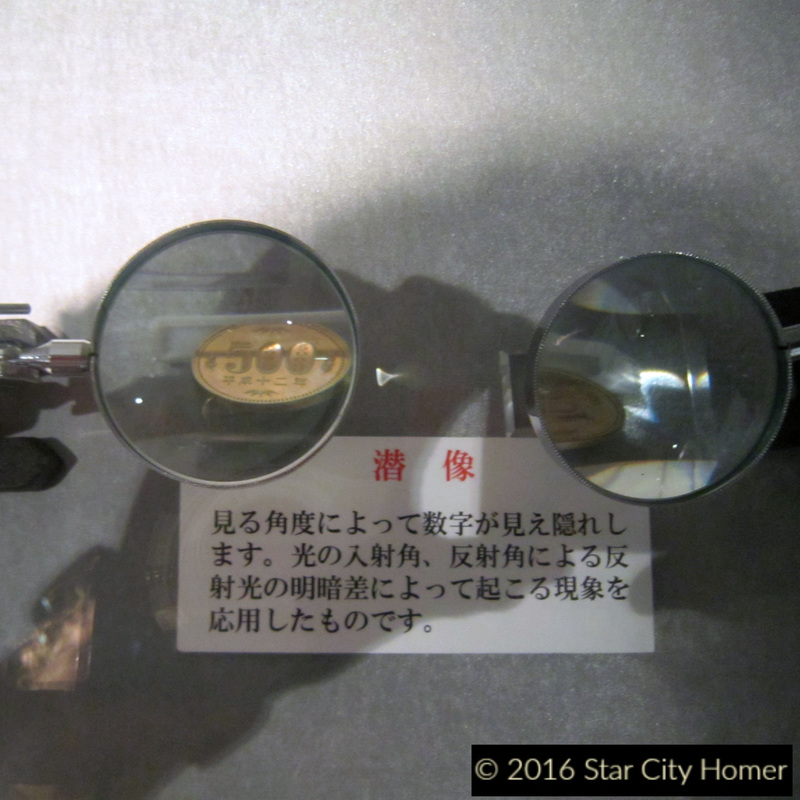Japan, 1948-DATE500 YEN
|
The 500 yen coin was first introduced in 1982 to replace the 500 yen note. It is frequently, depending on exchange rates, the highest denomination of circulation coinage in the world (thus an attractive target for counterfeiting).
The initial composition was cupro-nickel, weighing 7.2 grams with a 26.5 mm diameter. The specifications of the coin were such however that the much less valuable (about 1/10 equivalent) Korean 500 won coin was relatively easily modified and substituted in vending machines . Vending machines are quite ubiquitous in Japan, selling everything from hot canned coffee and cold teas, to rice, beer, and condoms (of the latter I was informed of this by my children as they passed one such vending machine while walking to their school bus every day), so the ability to cheat them was quite significant.
There are multiple 500 yen designs that are commemorative in nature and will be discussed on the commemorative page.
The initial composition was cupro-nickel, weighing 7.2 grams with a 26.5 mm diameter. The specifications of the coin were such however that the much less valuable (about 1/10 equivalent) Korean 500 won coin was relatively easily modified and substituted in vending machines . Vending machines are quite ubiquitous in Japan, selling everything from hot canned coffee and cold teas, to rice, beer, and condoms (of the latter I was informed of this by my children as they passed one such vending machine while walking to their school bus every day), so the ability to cheat them was quite significant.
There are multiple 500 yen designs that are commemorative in nature and will be discussed on the commemorative page.
|
This coin is an example of the initial 500 yen design.
It was pulled from circulation when I lived in Japan in the 2000s. Not sure how such a nice specimen from the first year of issue ended up in my pocket change, but there it was. The alloy is cupro-nickel and a little less golden than this picture shows. |
In 2000 the coin was modified by changing the composition to a nickel-brass alloy, weighing in at 7.0 grams (and the same 26.5 mm diameter). As the alloy is uncommonly used in other coinage, this was the first step in adding security.
In addition to the new alloy, security features include latent imaging, namely an image is visible in the zeros reading 500 yen depending on the angle of view. The reeding or ridges are at an angle aka a 'helically milled edge' There is also some microprinting as well--dots within the paulownia leaves and lines behind some of the characters.
The design was so impressive the coin won the Mint Directors Conference award in 2002 as the 'Most Innovative Coin Concept'.
The design was so impressive the coin won the Mint Directors Conference award in 2002 as the 'Most Innovative Coin Concept'.
The vending machines were recalibrated to recognize the new 500 yen coin by diameter, thickness, weight and even conductivity, however even that is not foolproof.
The newer counterfeits reported are not modified foreign coins but appear to have been created from raw materials. So far, apparently, the security features have not been replicated adequately to allow them to pass completely. Unfortunately they could fool vending machines or ATMs as the alloy, weight and measurements matched.
The Osaka Mint has a nice display showing the minting process of the 500 yen coin from start to finish. If you ever find yourself in Osaka a trip to the museum is worthwhile. There is an introductory movie in English, though all the displays (as of 2011) were in Japanese.










